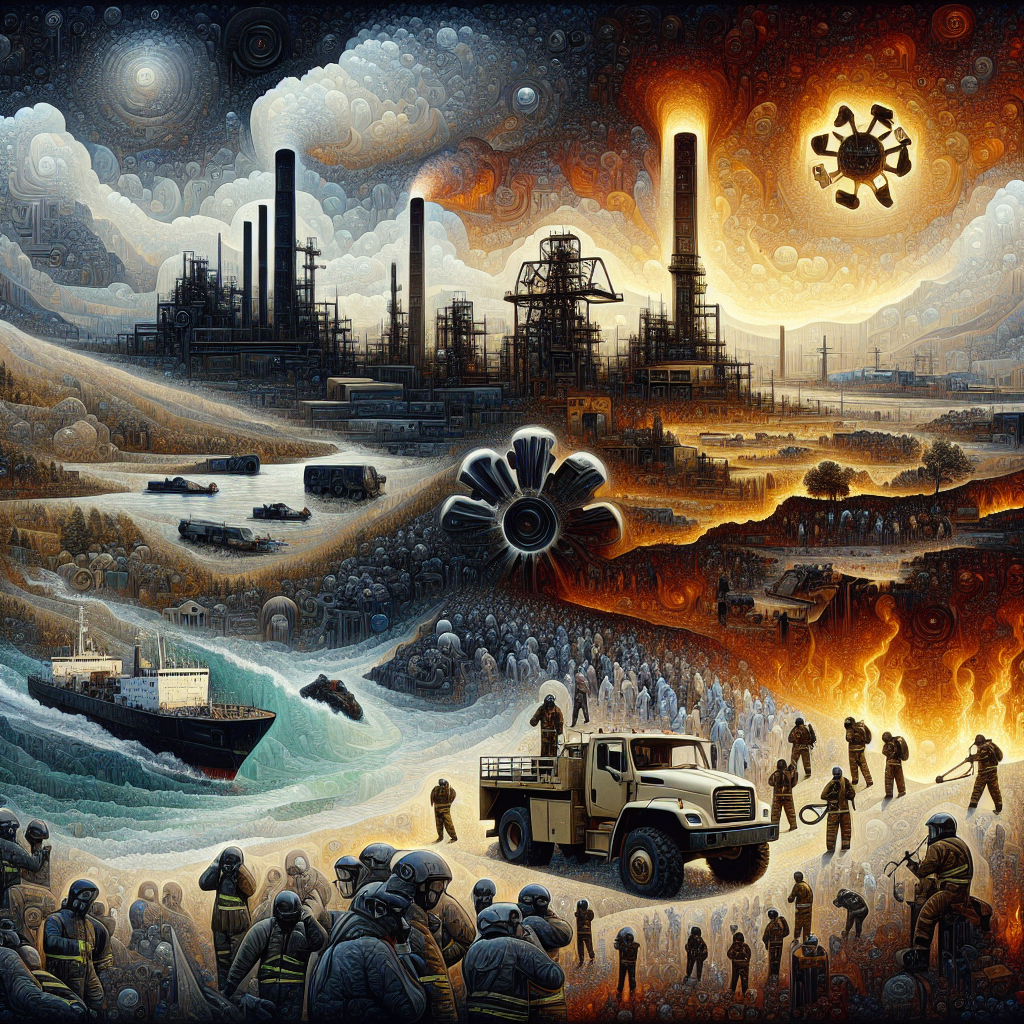Understanding Recent Global Events: A Comprehensive Analysis
Introduction
The global stage is always alive with events that shape societies, impact lives, and provide lessons for the future. In this post, we dive into five recent and impactful international stories, touching themes such as humanitarian crises, environmental care, and escalating geopolitical tensions. Through these stories, we aim to explore the nuances behind each event and its global resonance.
Stay tuned as we unravel the significance of key incidents, from the devastating explosion at Iran's southern port to a heartwarming sanctuary initiative for injured seals in the Netherlands.
1. Tragedy at Iran’s Southern Port: Learning from Industrial Accidents
The fire and explosion at a southern Iranian port shocked the international community, leaving 65 people dead and countless others injured. This catastrophe highlights the tangible risks tied to industrial operations, particularly in regions still refining their safety protocols.
Why it Matters:
Industrial mishaps not only cost lives but also impact economic activity. Ports like these serve as vital trade hubs for the region. With such incidents, local economies, international trade, and trust among global partners are affected.
Let’s Not Repeat History: Addressing and averting such accidents calls for enhanced safety regulations, regular inspections, and worker training. Beyond borders, lessons from Iran’s tragedy should inspire industries worldwide to prioritize human lives over productivity.
Related article: How Protocols Can Prevent Industrial Explosions
2. Yemen’s Migrant Detention Center: A Humanitarian Catastrophe
The airstrike on a migrant detention center in Yemen claimed at least 68 lives — a grim reminder of Yemen’s decade-long turmoil. From relentless civil wars to humanitarian crises, Yemen has been a battleground, often leaving migrants and refugees as the most vulnerable.
What’s Driving This Crisis?
Yemen’s situation is layered: foreign interventions, civil war factions, and rising migrant movements. The detention center tragedy illuminates the absence of safety frameworks for displaced individuals, who already live precariously between borders and political battles.
How Can We Respond?
Global attention and immediate action are imperative to address Yemen’s dire humanitarian needs. Governments and international organizations must work to protect at-risk populations and demand accountability for strikes that harm civilians.
According to a report by Reuters, further investigation is underway into the involvement of foreign powers in the Yemen crisis, potentially reshaping alliances.
3. Resilience Amid Hardship in Myanmar
One month has passed since a catastrophic earthquake rocked Myanmar, yet survivors remain in desperate need. The military government’s alleged airstrikes, despite existing ceasefires, have compounded an already devastating scenario.
Key Issues Post-Quake:
Aid distribution has stalled due to ongoing conflict, leaving remote communities without access to food, water, or medical supplies. Moreover, the military’s involvement creates hesitations for foreign agencies keen on offering relief.
Myanmar’s path to recovery isn’t just about rebuilding physical infrastructure — it’s about ending conflict, fostering trust, and prioritizing civilian welfare. The global community must spotlight Myanmar’s plight and make support easier, safer, and more sustainable.
Related article: Rebuilding Nations After Natural Disasters
4. Israel-Hezbollah Conflict: The Latest Escalation
Tensions between Israel and Hezbollah have escalated once again, with the recent Israeli airstrike targeting a missile facility in Beirut. With multiple players involved, including Iran-backed militias, Saudi Arabia, and Western allies, the conflict could have far-reaching consequences.
The Rising Risks:
Strikes of this nature contribute to broader instability in the already volatile Middle East. The operations reflect not only the ongoing feud between Israel and Hezbollah but also a broader power struggle that could destabilize the region.
As tensions rise, regional actors and international partners must navigate tricky diplomacy to avoid broader conflicts. History shows that unchecked escalations in this region tend to ripple globally.
5. A Seal Sanctuary of Hope in the Netherlands
Amid geopolitical crises and environmental disasters, here’s an uplifting development. A new rescue facility in the Netherlands, dedicated to caring for injured seals, has opened its doors. This World Heritage Centre features nine new tanks designed for rehabilitating marine animals.
Eco-Care in Action:
This heartwarming effort not only supports marine wildlife but also reminds us of humanity’s responsibility to care for our environment. Learning about such initiatives inspires communities to contribute to local conservation efforts.
For similar initiatives, see: Protecting Biodiversity in Action
Conclusion
From human tragedies in Yemen and Iran to uplifting environmental breakthroughs in the Netherlands, these stories display the highs and lows of global reality. Every event discussed reflects our interconnected responsibilities — from providing humanitarian relief to advocating for sustainable practices.
Your Takeaway:
Stay informed, advocate for what matters, and contribute meaningfully where you can. Whether it’s raising awareness about crises or volunteering at local conservation programs, every action counts.
Q&A Section
Q1: What’s the main cause of the crisis in Yemen?
A: Yemen’s crisis stems largely from its civil war, foreign intervention, and lack of governance, exacerbating humanitarian issues.
Q2: How can industrial accidents like Iran’s be avoided?
A: Strengthened safety regulations, frequent inspections, and robust crisis management training can help reduce such incidents.
Q3: Why is biodiversity conservation important today?
A: Preserving biodiversity ensures ecosystem stability, balances natural cycles, and sustains resources for future generations.
Q4: What steps can be taken to de-escalate Middle Eastern tensions?
A: Diplomacy, negotiation, and involving neutral parties for conflict resolution can help reduce tensions.
Q5: How can individuals support disaster-hit regions like Myanmar?
A: Support trusted nonprofit organizations actively working on providing relief and rebuilding efforts in the region.
Tags
#IranPortTragedy #YemenCrisis #MyanmarEarthquake #IsraelHezbollahConflict #SealSanctuaryNetherlands
Final Thoughts
Every story sheds light on a broader theme affecting humanity today. Let’s turn information into impact — dive deeper into causes that resonate with you, and take action to help drive change. Looking forward to seeing how you make a difference!
